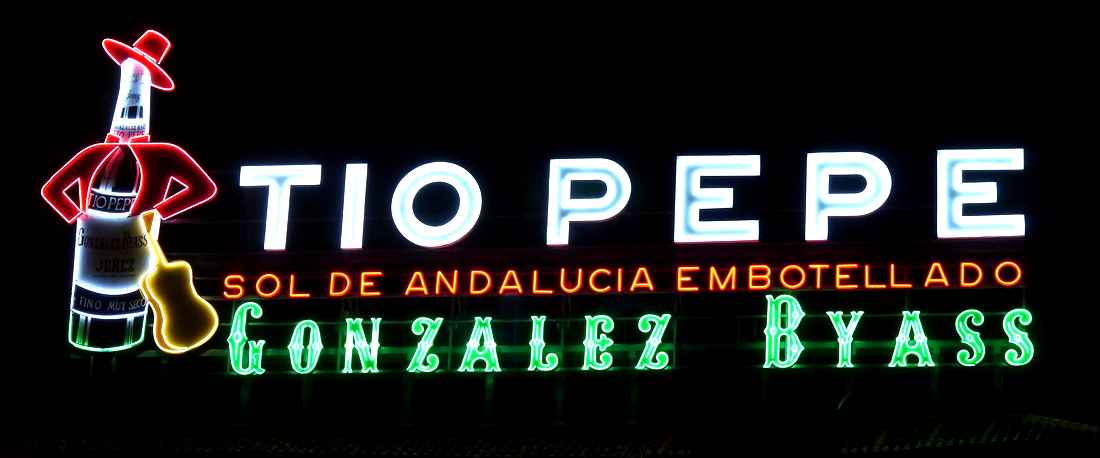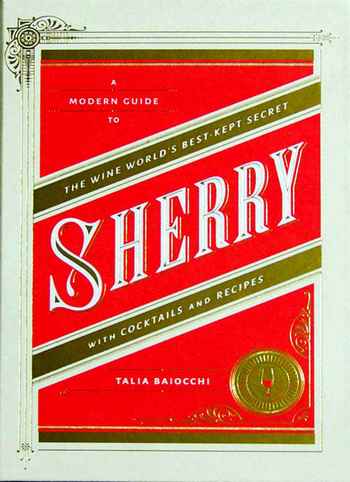
When we were in Madrid in October, we were happy to see that the Tío Pepe neon symbol darkened by the corporate forces at Apple had switched sides of Puerta del Sol and was lighting up the plaza again from atop El Corte Inglés department store. (See above.) The bright lights seem symbolic of the broader rehabilitation of the image of sherry. For a long time, drinking sherry implied that you were were old, prissy, British or all three.
 But now that cream sherries (a hideous adulteration of sherry by blending with sweet wine) are all but a thing of the past, cocktail-savvy drinkers are embracing real sherry in all its complex, nuanced forms. And though we’re a little late to the party, we want to call our readers’ attention to a fairly new book, Sherry: A Modern Guide to the Wine World’s Best-Kept Secret by one of the best wine and spirits writers to come along in a generation, Talia Baiocchi. It’s a great introduction to the wine and makes simple good reading. It’s also a good guide to visiting Spain’s Sherry Triangle if wine is foremost on your agenda.
But now that cream sherries (a hideous adulteration of sherry by blending with sweet wine) are all but a thing of the past, cocktail-savvy drinkers are embracing real sherry in all its complex, nuanced forms. And though we’re a little late to the party, we want to call our readers’ attention to a fairly new book, Sherry: A Modern Guide to the Wine World’s Best-Kept Secret by one of the best wine and spirits writers to come along in a generation, Talia Baiocchi. It’s a great introduction to the wine and makes simple good reading. It’s also a good guide to visiting Spain’s Sherry Triangle if wine is foremost on your agenda.
The editor of the online magazine PUNCH (www.punchdrink.com) was captivated with sherry when she first started tasting the good stuff. So off she went to Spain to chronicle the wine, its production, and many of the leading bodegas that export to North America. She also includes a number of recipes and cocktails, including the directions for a Sherry Cobbler, the number-one cocktail in 19th century America. Classically, it consists of 3 ounces of amontillado, 3/4 ounce of simple syrup, a lemon wheel, an orange wheel, a glass of crushed ice—and a straw. “Don’t forget the straw,” Baiocchi says. The Sherry Cobbler actually popularized the drinking straw way back when.
